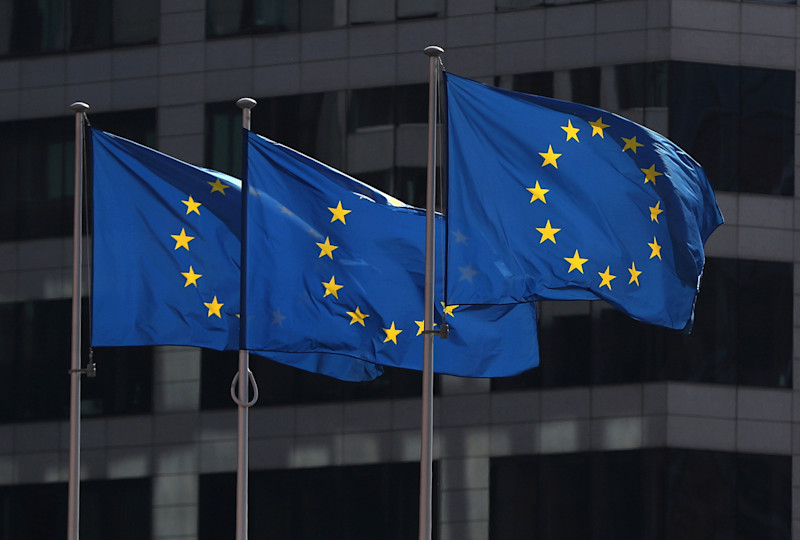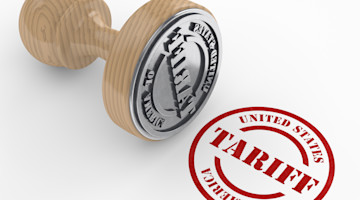Since the beginning of 2021, the economy in Europe has been doing well, and manufacturing has reported good to great progress. By mid-year, in most cases, things returned to the pre-pandemic level. In many cases, it exceeded it. Manufacturing is responsible for some 25% of European overall revenue, so GDP growth has been toddling along in the right direction. By the end of the third quarter, it was between 2.5% and 6%, depending on the country. However, some concurrent challenges to the positive trends have also emerged. The two most concerning are rising inflation and the continued disruption in the supply chain. These have become very problematic this fall. For more specific industry intel and other tidbits, read on.
At the beginning of October, the average annual inflation rate for the 27 countries of the European Union was 3.2%. Below this average was Switzerland (a mere 1.2%), France, Italy, the UK, and the Netherlands (around 3%). Above the average were Germany (4.5%), Spain, and Czechia. Hungary, Poland, and Romania exceeded 6%, and Russia was over 8%. Turkey had the worst showing at nearly 17% inflation.
The supply chain problems originally were simply the result of lockdowns and temporary shutdowns of factories, but it has grown into something more disruptive and structural. Behind the supply chain disruption in Europe, as elsewhere, are now two main factors. First is the shortage of labor due to retirements and resignations as people reevaluated their priorities. Second is the supply chain realignment, as a shortage of supplies from the usual sources mandates finding alternative solutions.
Some sectors of European manufacturing, although restored to pre-pandemic levels, have lost some ability to move forward, while others have gained momentum. The most striking example is the automotive “shake-up” and the trend to new fuels (read: electric vehicles). Machine vision, motion control, and new drive motor markets are seeing remarkable growth.
The EU has created lavish funds for advanced manufacturing research in public-private partnerships to produce new, complex products with reduced waste, pollution, material consumption, and energy use.
At the beginning of 2020, the top European manufacturers by market value were Volkswagen, Daimler, Exor, Siemens, and BMW. As of September 2021, the top slots went to ASML Holding (electronics and semiconductors), Prosus (communications), Accenture (software and IT), Totalenergies (energy), and Airbus. A noteworthy shift.
The very strong manufacturing PMI recorded for most of 2021 recently slid but is still quite good. For the eurozone (the 19 countries with euro currency), the average is 58.3. Large economies like Germany, the UK, Italy, Spain, Czechia, and the Netherlands are on this level. Some others are a bit lower, such as France at 53.6. Russia, Poland, Romania, and Turkey are all between 51 and 52. Yet, all are above 50, which is quite positive. The European star is Switzerland, with a manufacturing PMI of 65.4 and a growth rate of 7.7%.
Industrial macrotrends point to a positive business climate in industries close to the hearts of AMT members. CECIMO, the European umbrella association composed of 15 national associations of machine tool builders, has just released its business climate barometer. Those surveyed have largely been satisfied with the business moods of their user industries, and their business expectations for the end of the year remain very high. And indeed, many good things are happening in the priority sectors of manufacturing: aerospace, automotive, and renewable energy.
Pan-European Airbus has announced that it is in the final design stage for its CityAirbus for the urban air mobility sector. This fully electric vehicle can fly 80 kilometers at a cruise speed of 120 kph and hold four passengers – while producing zero emissions. British Rolls-Royce is the frontrunner in manufacturing aircraft engines that use only sustainable aviation fuel (a fuel derived from renewable sources, such as waste materials). The goal is to reduce carbon dioxide emissions and provide an alternative solution for jet engines.
Swedish-based Saab celebrated its expansion in the U.S. aerospace sector with the opening of its new facility in West Lafayette, Indiana, where sections of the Boeing-Saab T-X jet trainer will be built.
Rolls-Royce North America, at its Indianapolis operation center, has completed a major revitalization program for high-tech manufacturing for propulsion and power solutions. With an investment of more than $600 million, the goal is to become carbon net-zero by 2030.
Hungarian Wizzair ordered 102 new Airbus A321 airliners. Airbus, over the last five years, has sold 1,950 of such airplanes. These new models, however, are equipped with new engines that allow for a 25% savings in fuel and CO2 emissions, as well as a 50% noise reduction.
Tesla’s German Gigafactory is very close to its operational phase. An open house event was held at the beginning of November, where attendees were presented with the concept that Tesla has reinvented the car manufacturing process. CEO Elon Musk announced that the factory will make full-size cars with Tesla’s giant casting machines in the same way that toy cars are made. Literally. It would use the world’s largest die-casting machines for aluminum injection, clamped to achieve the pressure of 6,100 tons, to form parts. The Tesla Model Y’s front and rear underbodies will each be one piece of metal. According to a worried Volkswagen Group CEO, Tesla will be able to build an electric car in a third of the time it takes his company.
Speaking of VW, they are scouting locations for six planned battery cell factories. Rumor has it that Czechia is the frontrunner, but Hungary, Poland, and Slovakia are also being considered.
GM will reestablish its European presence with a mobility startup, while Volvo plans its third plant in Europe.
Most of the European car manufacturers, with exception of Renault and Ford, have increased their YTD sales.
The alliance of the EU, China, India, Japan, Korea, Russia, and the United States, with 30 other countries, is working in harmony to build a giant ITER fusion reactor in southern France. It is a magnetic fusion device to produce carbon-free energy using the same principle that powers the sun.
Spain, France, and Germany are the European leaders in using solar energy for industrial applications on a large scale. Other countries are joining. Poland has put into operation a 1000 MW solar farm in Brudzewo and has planned a nearby installation to manufacture green hydrogen.









